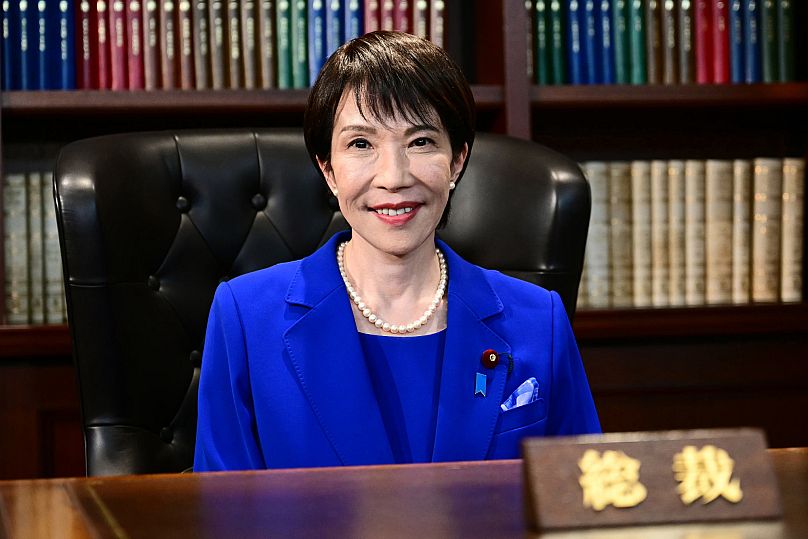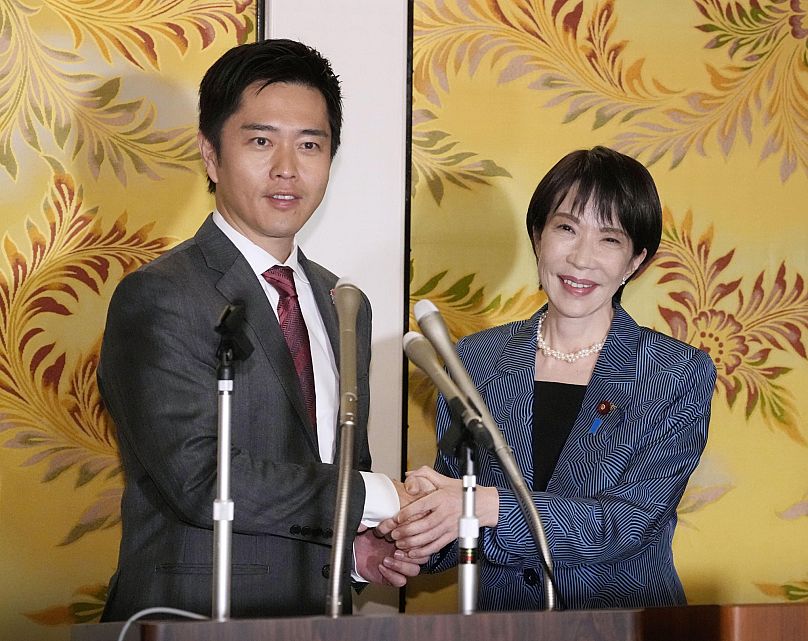Takaichi replaces Prime Minister Shigeru Ishiba, ending a three-month political vacuum and wrangling since the Liberal Democratic Party’s disastrous election loss in July.
Japan’s parliament on Tuesday elected conservative Sanae Takaichi as the country’s first female prime minister, a historic first that comes one day after her struggling party struck a coalition deal with a new partner that would pull her governing bloc further to the right.
Lawmakers in the lower house of the National Diet of Japan elected Takaichi with 237 votes, more than what was needed for a simple majority. Earlier, she won the vote in the less powerful upper house.
Takaichi will replace Prime Minister Shigeru Ishiba, ending a three-month political vacuum and wrangling since the Liberal Democratic Party’s disastrous election loss in July.
Ishiba, who lasted only one year in office, resigned with his cabinet earlier Tuesday, paving the way for his successor.
Who is Sanae Takaichi?
Born in 1961 in Nara Prefecture, Takaichi's mother was a police officer, and her father worked in an office. She was renowned for carrying a lot of sticks, which she often broke as an avid heavy metal drummer.
The conservative was not known to be anywhere in politics until the 1980s, when trade tensions between the US and Japan were at their highest.
In 1996, she was elected to a parliamentary seat with the LDP and became known as one of the party's most vocal conservative voices. She has gone on to be elected as an MP ten times, suffering only one defeat.
While she becomes the first woman serving as Japan’s prime minister, Takaichi is expected to be in no rush to promote gender equality or diversity.
The 64-year-old is believed to be among Japanese politicians who have stonewalled measures for feminism. Takaichi supports the imperial family’s male-only succession and opposes legislation that would have allowed married women to keep their maiden surnames or separate surnames for married couples.
She has also openly talked about her struggles to have biological children but has helped to raise three children from her husband's previous marriage.
But in a country where several prime ministers and MPs are the sons, grandsons, or even great-grandsons of politicians, her endeavor to rise through the ranks of politics without a familial tie is somewhat respected. However, a major test lies ahead for Takaichi.
A major test ahead for Sanae
With a fractured oppostion, the LDP’s off-the-cuff alliance with the Osaka-based rightwing Japan Innovation Party, or Ishin no Kai, ensured her premiership but the real test comes ahead nonetheless.
Short of a majority in both houses of parliament and they need to court other opposition groups to pass any legislation – a risk that could make her government unstable and short-lived.
“Political stability is essential right now,” Takaichi said at Monday’s signing ceremony with the JIP leader and Osaka Gov. Hirofumi Yoshimura. “Without stability, we cannot push measures for a strong economy or diplomacy.”
On Monday, the the two parties signed a coalition agreement on policies underscoring Takaichi’s hawkish and nationalistic views.
Their last-minute deal comes 10 days after the Liberal Democrats lost its longtime partner, the Buddhist-backed Komeito, which has a more dovish and centrist stance. The breakup threatened a change of power for the LDP, which has governed Japan almost uninterrupted for decades.
Takaichi will present a Cabinet with a number of allies of LDP’s most powerful kingmaker, Taro Aso, and others who backed her in the party leadership vote.
JIP will not hold ministerial posts in Takaichi’s Cabinet until his party is confident about its partnership with the LDP, Yoshimura said.
Economy and foreign policy challenge
Takaichi is running on deadline—a major policy speech later this week, talks with US President Donald Trump, and regional summits. She needs to quickly tackle rising prices and compile economy-boosting measures by late December to address public frustration.
A protégé of assassinated former Prime Minister Shinzo Abe, Takaichi is expected to emulate his policies, including a stronger military and economy, as well as revising Japan’s pacifist constitution. With a potentially weak grip on power, it’s unknown how much Takaichi would be able to achieve.
When Komeito left the governing coalition, it cited the LDP’s lax response to slush fund scandals that led to their consecutive election defeats.
The centrist party also raised concern about Takaichi’s revisionist view of Japan’s wartime past and her regular prayers at Yasukuni Shrine despite protests from Beijing and Seoul that see the visits as a lack of remorse about Japanese aggression, as well as her recent xenophobic remarks.
Takaichi has toned down her hawkish rhetoric. On Friday, Takaichi sent a religious ornament instead of going to Yasukuni.













